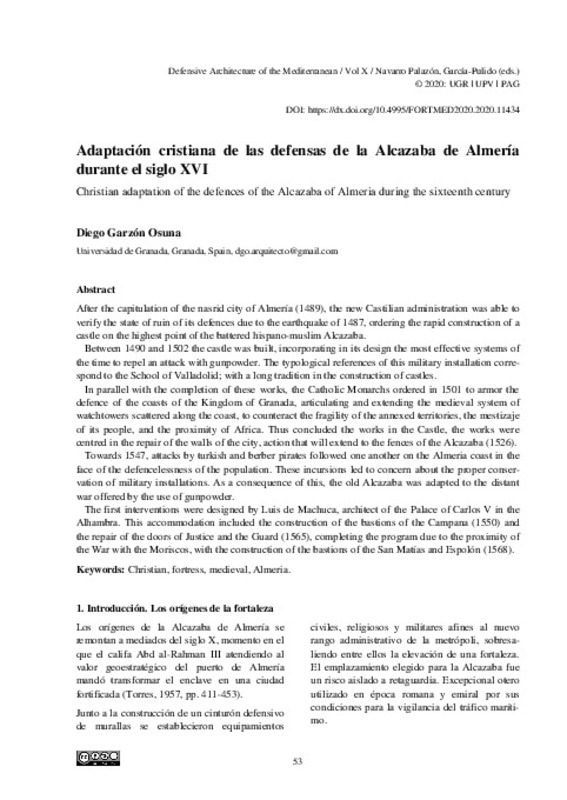JavaScript is disabled for your browser. Some features of this site may not work without it.
Buscar en RiuNet
Listar
Mi cuenta
Estadísticas
Ayuda RiuNet
Admin. UPV
Desde el lunes 3 y hasta el jueves 20 de marzo, RiuNet funcionará en modo de solo lectura a causa de su actualización a una nueva versión.
Adaptación cristiana de las defensas de la Alcazaba de Almería durante el siglo XVI
Mostrar el registro completo del ítem
Garzón Osuna, D. (2020). Adaptación cristiana de las defensas de la Alcazaba de Almería durante el siglo XVI. Editorial Universitat Politècnica de València. 53-60. https://doi.org/10.4995/FORTMED2020.2020.11434
Por favor, use este identificador para citar o enlazar este ítem: http://hdl.handle.net/10251/146974
Ficheros en el ítem
Metadatos del ítem
| Título: | Adaptación cristiana de las defensas de la Alcazaba de Almería durante el siglo XVI | |
| Otro titulo: |
|
|
| Autor: | Garzón Osuna, Diego | |
| Fecha difusión: |
|
|
| Resumen: |
[EN] After the capitulation of the nasrid city of Almería (1489), the new Castilian administration was able to
verify the state of ruin of its defences due to the earthquake of 1487, ordering the rapid construction of ...[+]
|
|
| Palabras clave: |
|
|
| Derechos de uso: | Reconocimiento - No comercial - Sin obra derivada (by-nc-nd) | |
| ISBN: |
|
|
| DOI: |
|
|
| Editorial: |
|
|
| Versión del editor: | http://ocs.editorial.upv.es/index.php/FORTMED/FORTMED2020/paper/view/11434 | |
| Título del congreso: |
|
|
| Lugar del congreso: |
|
|
| Fecha congreso: |
|
|
| Tipo: |
|








